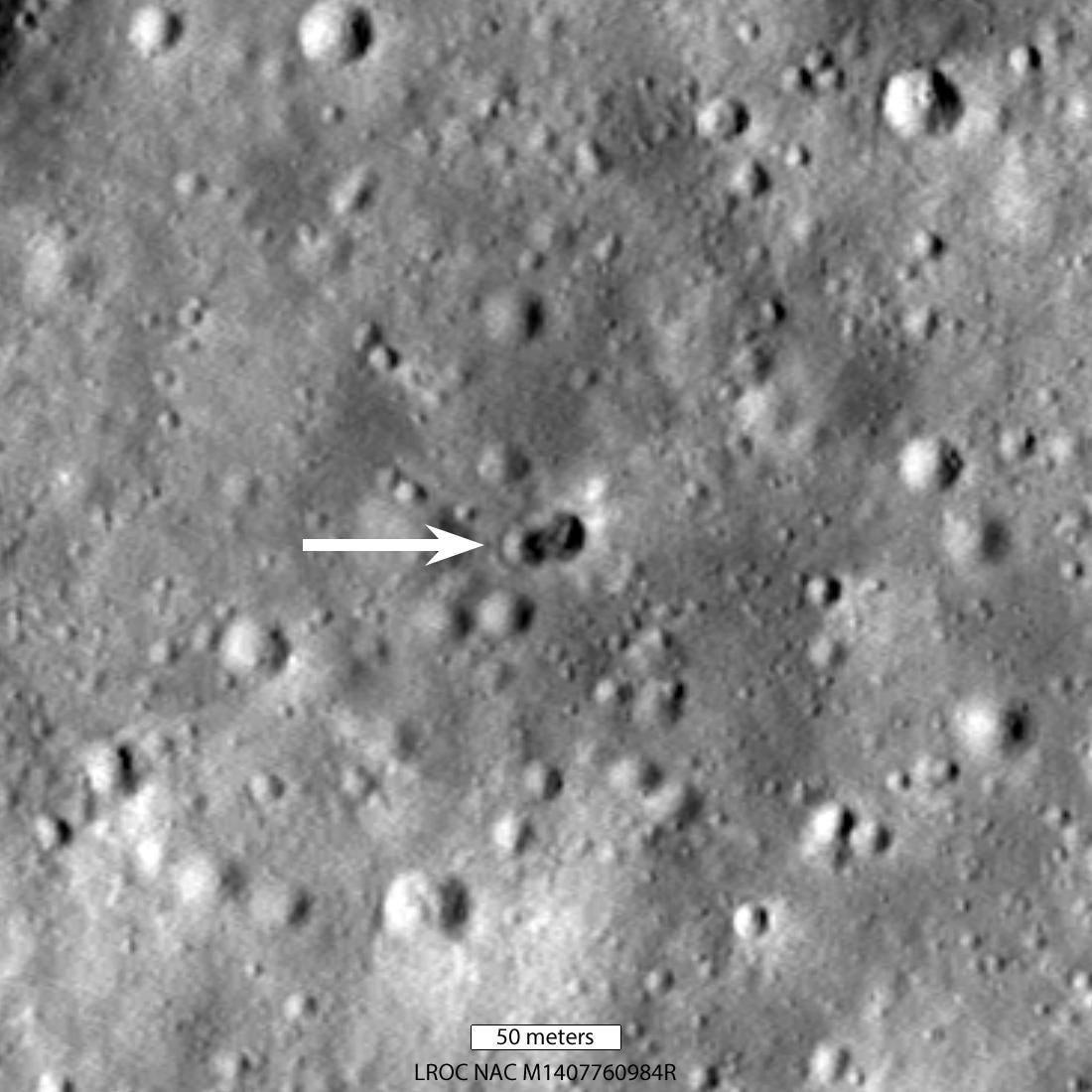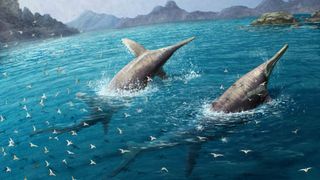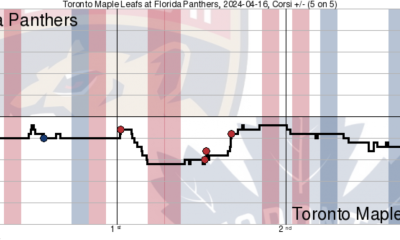Science
See NASA’s New Mission To Orbit The Moon Launch As Summer Stars Rise: What You Can See In The Night Sky This Week – Forbes

Each Monday I pick out the northern hemisphere’s celestial highlights (mid-northern latitudes) for the week ahead, but be sure to check my main feed for more in-depth articles on stargazing, astronomy, eclipses and more.
What To Watch For In The Night Sky This Week: June 6-12, 2022
This week is a good one to go Moon-gazing. With our natural satellite in space waxing towards its full “Strawberry Supermoon” phase next week the night sky will get increasingly Moon-filled. Although the glare will get worse as the week wears on, try putting a pair of binoculars on the lunar surface to see its craters and ancient, dark lava fields, called mare.
Illustration of Gateway in lunar orbit with contributions from international partners.
NASA
Monday, June 6, 2022: NASA’s CAPSTONE Mission could launch
Today sees the launch window open for Rocket Lab’s Electron rocket, which will send NASA’s Cislunar Autonomous Positioning System Technology Operations and Navigation Experiment (CAPSTONE) to orbit the Moon.
Launching from the Mahia Peninsula, New Zealand, CAPSTONE will test the stability of a new orbit around the Moon (a near-rectilinear halo orbit, if you need to know) that NASA wants to use for its Lunar Gateway space station.
Tuesday, June 7, 2022: First Quarter Moon and a SpaceX launch to the ISS
Tonight is Last Quarter Moon, when the Moon is half-lit and rising after midnight. Scheduled to launch at 11:25 a.m. EDT today from Kennedy Space Center, Florida is the SpaceX Dragon CRS-25 cargo resupply mission to the International Space Station (ISS).
Thursday, June 9, 2022: The Moon and Spica
Stellarium
Thursday, June 9, 2022: The Moon and Spica
Tonight in the southern sky come nightfall you’ll see a 75%-illuminated Moon just 5º from Spica, the brightest star in the constellation of Virgo. Spica is the 16th brightest star and about 260 light-years distant.
Sunday, June 12, 2022: The Moon and Antares
A near-full 97% Moon will tonight shine just above bright star Antares in the constellation of Scorpius. A red supergiant star and the 15th brightest star visible, Antares is 555 light-years away. Its sits just above the bright center of our Milky Way galaxy (though with such a bright Moon you’ll have a difficult job finding it even if you’re under a dark sky).
The summer triangle stars chart in the Northern Hemisphere
getty
Constellation of the week: Lyra, the Harp
This small diamond-shaped constellation is home to Vega, the star that all others are judged by. The fifth brightest star in the night sky and about 25 light-years away, this blue star is a yardstick for judging the apparent magnitude, or brightness, of stars. If a star is dimmer than Vega, it gets a (+) figure, and if it’s brighter than Vega it gets a (-) figure.
Together with Deneb in Cygnus and Altair in Aquila, Vega helps form the “Summer Triangle,” a seasonal asterism (a recognisable shape, not an official constellation) that rises in late spring and sets in fall. Watch the Summer Triangle move higher each night over the next few months, and you’ll have an anchor in the summer night sky for the rest of your life.
Wishing you clear skies and wide eyes.
Science
Local astronomer urges the public to look up – Windsor News Today – windsornewstoday.ca


If last week’s solar eclipse piqued your interest in astronomy, the Royal Astronomical Society of Canada’s Windsor Chapter plans to show off some of the more dramatic photos and videos members took of the event.
They were stationed along the path of totality along the northern shore of Lake Erie and in the U.S.
“People did take some nice photos with their cellphones, but we have members who took photos and videos with their telescopes,” said member Tom Sobocan. “You’ll see some pretty impressive shots.”
About 100 members are in the local chapter, which meets every third Tuesday of every month.
Thursday’s meeting is at the Ojibway Nature Centre on Matchette Road. It starts at 7:30, and it’s open to the public. Seating is limited, so Sobocan recommends arriving early.
Astronomers are looking ahead to new wonders in the heavens. Right now, the Pons-Brooks Comet, another once-in-a-lifetime opportunity, is approaching Jupiter in the constellation of Aries.
“If you’re in a dark-sky location, you can see it with the naked eye, and from inside the city, you can see it with binoculars,” said Sobocan. “It may get a little bit brighter going towards the fall, but our members have already photographed it with their telescopes.”
It’s a periodic comet which appears in the night sky once every 71 years.
Sobocan said once-in-a-lifetime events, like last week’s eclipse, inspired many of its existing members, but he hopes some new ones will join the group.
“I hope it inspires them to look up at the sky a little bit more often and realize that everything’s in motion in the sky,” he said. “It’s not stationary.”
Science
Giant, 82-foot lizard fish discovered on UK beach could be largest marine reptile ever found – Livescience.com


Scientists have unearthed the remains of a gigantic, 200 million-year-old sea monster that may be the largest marine reptile ever discovered.
The newfound creature is a member of a group called ichthyosaurs, which were among the dominant sea predators during the Mesozoic era (251.9 million to 66 million years ago). The newly described species lived during the end of the Triassic period (251.9 million to 201.4 million years ago).
Ichthyosaurs had already attained massive sizes by the early portion of the Mesozoic, but it was not until the late Triassic that the largest species emerged.
While the Mesozoic is known as the age of the dinosaurs, ichthyosaurs were not themselves dinosaurs. Instead, they evolved from another group of reptiles. Their evolutionary path closely mirrors that of whales, which evolved from terrestrial mammals that later returned to the sea. And like whales, they breathed air and gave birth to live young.
The newly discovered ichthyosaur species was unearthed in pieces between 2020 and 2022 at Blue Anchor, Somerset in the United Kingdom. The first chunk of the fossil was noticed atop a rock on the beach, indicating that a passerby had found it and set it there for others to examine, the researchers explained in the paper. The researchers published their findings April 17 in the journal PLOS One.
The reptile’s remains are made up of a series of 12 fragments from a surangular bone, which is found in the upper portion of the lower jaw. The researchers estimate the bone was 6.5 feet (2 meters) long and that the living animal was about 82 feet (25 m) long.
The researchers named the sea monster Ichthyotitan severnensis, meaning giant lizard fish of the Severn, after the Severn Estuary where it was found. The team believes it is not only a new species but an entirely new genus of ichthyosaur. More than 100 species are already known.
window.sliceComponents = window.sliceComponents || ;
externalsScriptLoaded.then(() => {
window.reliablePageLoad.then(() => {
var componentContainer = document.querySelector(“#slice-container-newsletterForm-articleInbodyContent-5Tm52KifRnJsTxFt8noX8R”);
if (componentContainer)
var data = “layout”:”inbodyContent”,”header”:”Sign up for the Live Science daily newsletter now”,”tagline”:”Get the worldu2019s most fascinating discoveries delivered straight to your inbox.”,”formFooterText”:”By submitting your information you agree to the Terms & Conditions and Privacy Policy and are aged 16 or over.”,”successMessage”:”body”:”Thank you for signing up. You will receive a confirmation email shortly.”,”failureMessage”:”There was a problem. Please refresh the page and try again.”,”method”:”POST”,”inputs”:[“type”:”hidden”,”name”:”NAME”,”type”:”email”,”name”:”MAIL”,”placeholder”:”Your Email Address”,”required”:true,”type”:”hidden”,”name”:”NEWSLETTER_CODE”,”value”:”XLS-D”,”type”:”hidden”,”name”:”LANG”,”value”:”EN”,”type”:”hidden”,”name”:”SOURCE”,”value”:”60″,”type”:”hidden”,”name”:”COUNTRY”,”type”:”checkbox”,”name”:”CONTACT_OTHER_BRANDS”,”label”:”text”:”Contact me with news and offers from other Future brands”,”type”:”checkbox”,”name”:”CONTACT_PARTNERS”,”label”:”text”:”Receive email from us on behalf of our trusted partners or sponsors”,”type”:”submit”,”value”:”Sign me up”,”required”:true],”endpoint”:”https://newsletter-subscribe.futureplc.com/v2/submission/submit”,”analytics”:[“analyticsType”:”widgetViewed”],”ariaLabels”:;
var triggerHydrate = function()
window.sliceComponents.newsletterForm.hydrate(data, componentContainer);
if (window.lazyObserveElement)
window.lazyObserveElement(componentContainer, triggerHydrate);
else
triggerHydrate();
}).catch(err => console.log(‘Hydration Script has failed for newsletterForm-articleInbodyContent-5Tm52KifRnJsTxFt8noX8R Slice’, err));
}).catch(err => console.log(‘Externals script failed to load’, err));
A number of rib fragments and a coprolite, or fossilized feces, were found in the area as well, but they were not definitively attributed to the same animal.
The sediments in which these specimens were found contained rocks that indicated earthquakes and tsunamis occurred during that time, which suggests that this species lived during a time of intense volcanic activity that may have led to a massive extinction event at the end of the Triassic according to the researchers.
A similar specimen was discovered in Lilstock, Somerset in 2016 and described in 2018. Both were found in what is known at the Westbury Mudstone Formation, within 6 miles (10 kilometers) of each other. This ichthyosaur was estimated to have been as much as 85 feet (26 m) long, although the authors of the latest study believe it was slightly smaller.
The previous contender for the largest marine reptile was another ichthyosaur, Shonisaurus sikanniensis, which was up to 69 feet (21 m) long. S. sikanniensis appeared 13 million years earlier than I. severnensis and was found in British Columbia, making it unlikely that the new discovery represents another specimen of the previously known species.
A similarly massive ichthyosaur called Himalayasaurus tibetensis, which may have reached lengths of 49 feet (15 m), was discovered in Tibet and described in 1972. It dates to the same period, meaning that it probably is not the same species as the new discovery either.
I. severnensis was likely among the last of the giant ichthyosaurs, the researchers claim. Ichthyosaurs persisted into the Cenomanian Age (100.5 million to 93.9 million years ago) of the late Cretaceous period (100.5 million to 66 million years ago). They were eventually supplanted by plesiosaurs — long-necked marine reptiles that went extinct at the end of the Cretaceous, alongside all non-avian dinosaurs.
Science
Federal government announces creation of National Space Council | RCI – Radio-Canada.ca


- Home
- Politics
- Federal Politics
The Canadian Space Agency also received a proposed $8.6 million for its lunar program
Nicole Mortillaro (new window) · CBC News
Canada’s space sector received a boost from the federal government in its budget, both in terms of money and vision.
The 2024 budget (new window) included a proposal for $8.6 million in 2024-25 to the Canadian Space Agency (CSA) for the Lunar Exploration Accelerator Program (new window) (LEAP), which invests in technologies for humanity’s return to the moon and beyond.
In addition to the funding, the federal government also announced the creation of a National Space Council, which will be a new whole-of-government approach to space exploration, technology development, and research.
For Space Canada (new window), an organization comprised of roughly 80 space sector companies including some of Canada’s largest, such as Magellan Aerospace (new window), Maritime Launch (new window) and MDA Space (new window), it was a welcome announcement.
We’ve been advocating for it since the inception of our organization, and we were really very happy, and we applaud the federal government’s commitment announced in the budget,
said Brian Gallant, CEO of Space Canada.
Gallant said that investment in space is an investment in Canada.
Two-thirds of space sector jobs are STEM jobs. These are good paying solid jobs for Canadians. And on top of that, we have approximately $2.8 billion that is injected into the Canadian economy because of the space sector,
he said.
The U.S. formed its National Space Council in 1989, but it was disbanded in 1992 and reestablished in 2017.
In the 2023 budget (new window), the government announced proposed spending of $1.2 billion over 13 years, that was to begin in 2024-25, to the CSA’s contribution of a lunar utility (new window) vehicle that would assist astronauts on the moon. The as–yet–developed vehicle could help astronauts move cargo from landing sites to habitats, perform science investigations or support them during spacewalks on the surface of the moon.
It also proposed to invest $150 million over five years for the LEAP program.
MDA Space, the company behind Canadarm, was also pleased with the announcement.
Canada has an enviable global competitive advantage in space and the creation of a National Space Council is critical to Canada maintaining that leadership position,
CEO Mike Greenley said in an email to CBC News.
Space is now a rapidly growing, highly strategic and competitive domain, and there is a real and urgent need to recognize its importance to the lives of Canadians and to our economy and national security.
The next project for MDA is Canadarm3, which will be part of Lunar Gateway, a international space station that will orbit the moon. It will serve as a sort of jumping-off point for astronauts heading to the moon and eventually beyond.
The Lunar Gateway is a great opportunity for Canada and for MDA Space to not only provide the next generation of Canadarm robotics but to clearly plant our flag as a core national and industry participant in the Artemis era,
Greenley said.
Lunar Gateway is set to begin construction no earlier than 2025 (new window), according to NASA.
-



 Tech22 hours ago
Tech22 hours agoiPhone 15 Pro Desperado Mafia model launched at over ₹6.5 lakh- All details about this luxury iPhone from Caviar – HT Tech
-



 Sports22 hours ago
Sports22 hours agoLululemon unveils Canada's official Olympic kit for the Paris games – National Post
-
News20 hours ago
Toronto airport gold heist: Police announce nine arrests – CP24
-
Investment16 hours ago
Saudi Arabia Highlights Investment Initiatives in Tourism at International Hospitality Investment Forum
-
News17 hours ago
Loblaws Canada groceries: Shoppers slam store for green onions with roots chopped off — 'I wouldn't buy those' – Yahoo News Canada
-



 Tech20 hours ago
Tech20 hours agoVenerable Video App Plex Emerges As FAST Favorite – Forbes
-
Business16 hours ago
Rupture on TC Energy's NGTL gas pipeline sparks wildfire in Alberta – The Globe and Mail
-



 Sports19 hours ago
Sports19 hours agoGame in 10: Maple Leafs squander multi-goal lead to Florida, draw the Boston Bruins in the first round – Maple Leafs Hot Stove








